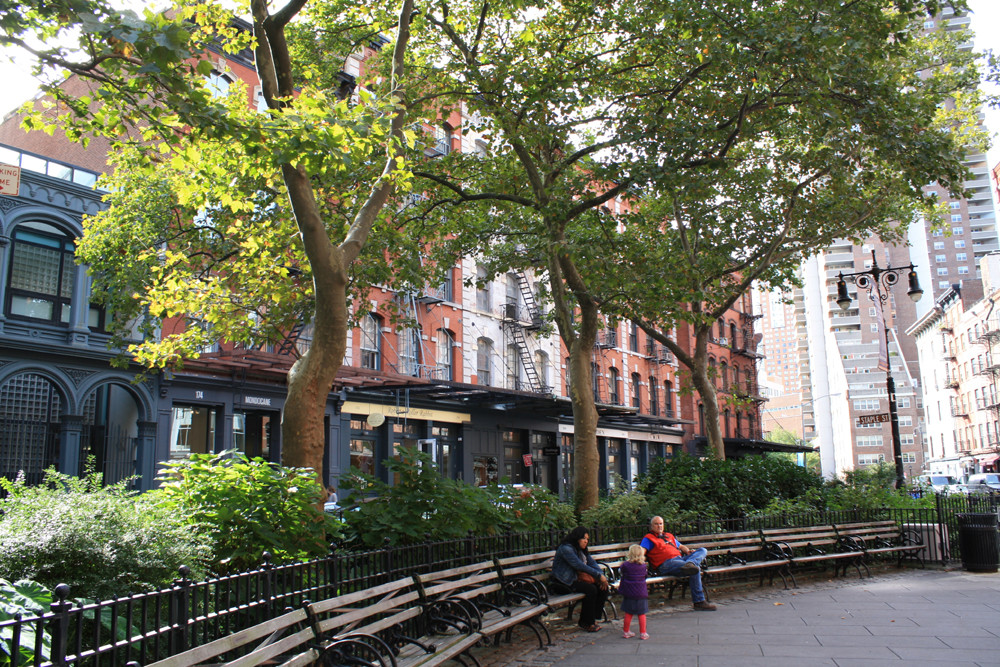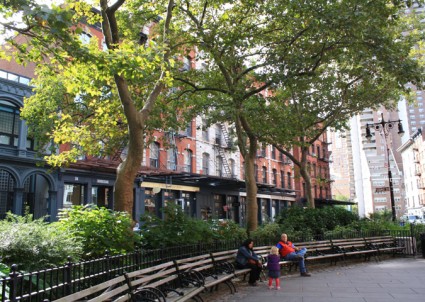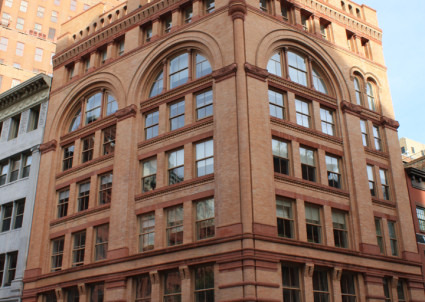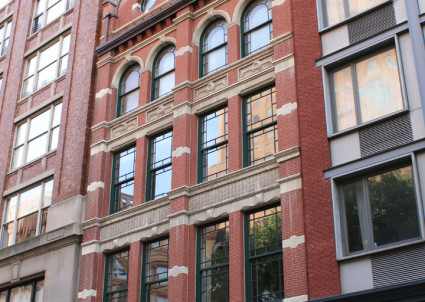Duane Park
1797; redesigned: Calvert Vaux, 1887; redesigned: Signe Nielsen, 1999
161-163 Duane Street, Babcock & Morgan, 1891-92
165-169 Duane Street, Stephen D. Hatch, 1881
173 Duane Street, Babb & Cook, 1880
168 Duane Street, Stephen D. Hatch, 1886
172 Duane Street, Jacob Weber, 1871-72
Named for James Duane, a Revolutionary War figure and mayor of New York City (1784-89), this is the city’s second oldest public park after Bowling Green. Its formal layout was redesigned by Calvert Vaux in 1887, paved over in the 1940s, and restored to evoke Vaux’s design in 1999. The buildings lining the park were originally warehouses for Washington Market, many housing dairy products. Tribeca’s iconic entrance canopies, of which there are many in this nook, were installed to protect goods from the sun. Numbers 161-163, 165-169 and 173 were designed in the Romanesque Revival style of brick, brownstone and terra-cotta. They feature intricate cornices, round arches and pilasters. The gabled corner tower on number 165-169 is particularly striking. On the south side, number 168 stands out for its Flemish-style silhouette (in 1891-92, its architect designed another Flemish-style building at 451-453 Washington Street) and number 172, whose cast-iron façade was preserved in front of a renovation in glass, evokes the Maison de Verre, an iconic 1931 Paris work by Pierre Chareau. Each site is located in the Tribeca West Historic District.




